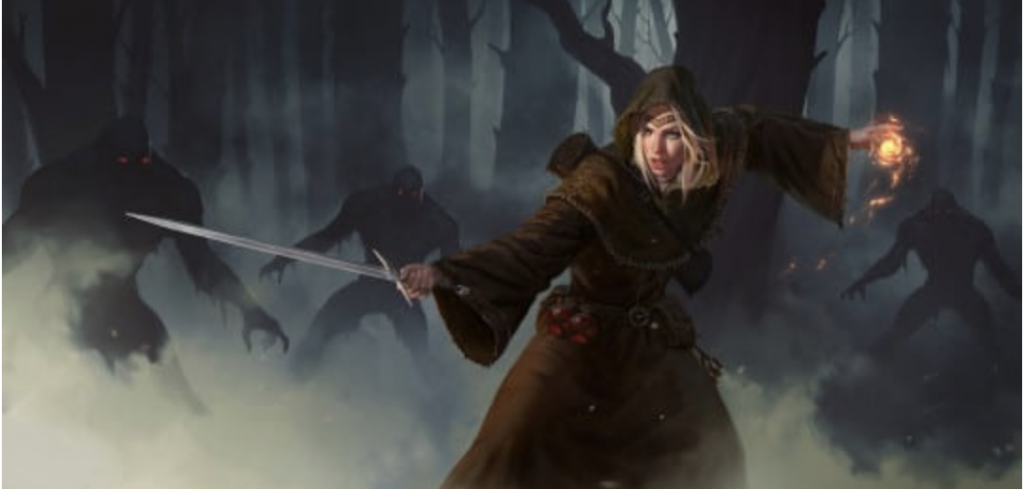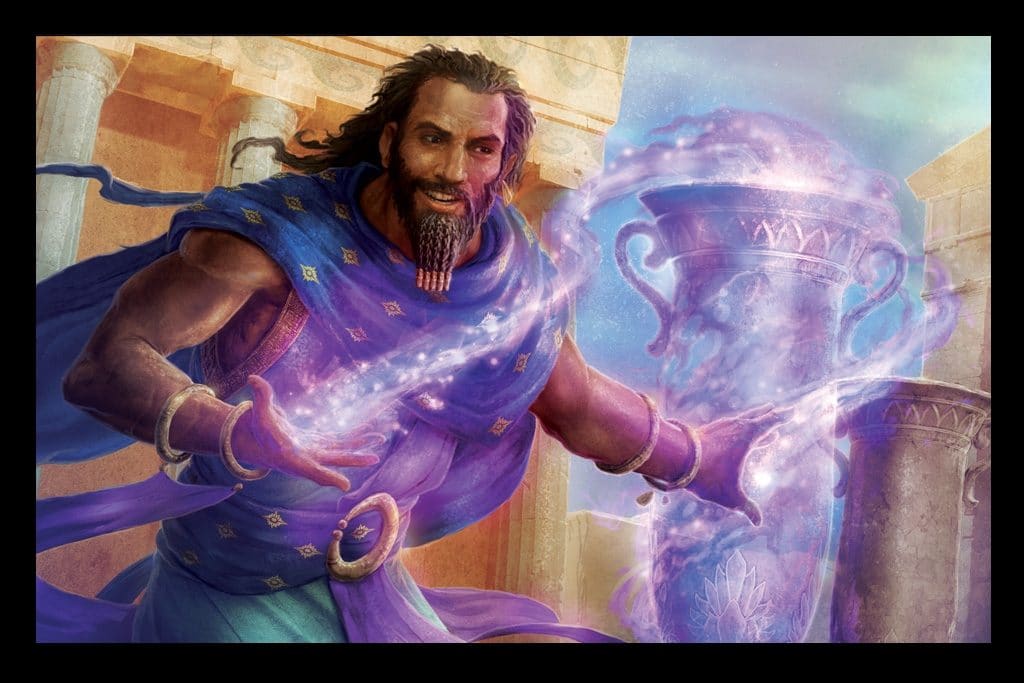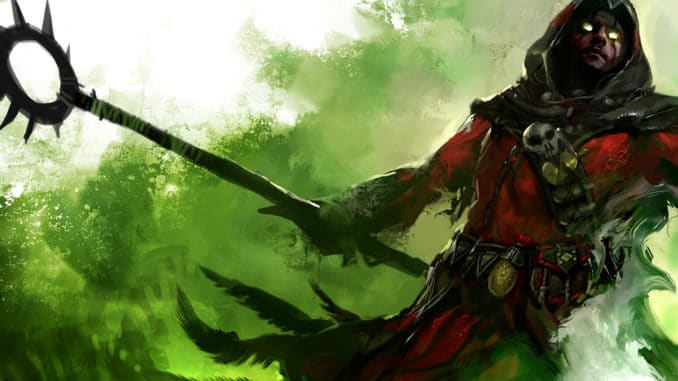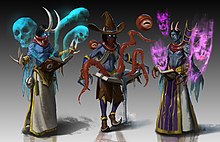Wizards are by far one of my favorite classes to play. But just because you know you want to play a wizard, doesn’t mean you know which subclass you want. With 10 official wizard subclasses for 5e, it can be a very tough call for many to commit an entire campaign too. As such, this guide is here not only to go over each subclass but also to help in your decision. So with that said, let’s get into the subclasses, shall we?
How Am I Evaluating the Wizard Subclasses?
So, before we begin the review, we should go over what I am rating and how I get my decision. There are three things that I am reviewing in the in-depth guide. I look over how strong the subclass is in combat, how much utility it has, and, if applicable, its’ roleplay ability. Then I separate each subclass into those three categories. This way everyone’s playstyle can be seen.
Now, when deciding if something is good for a guide, I look at what the subclass is trying to accomplish. Then look at how successful it succeeds in that task. For instance, in a previous article on the Bladesinger, I concluded it attempts to make you a competitive front line. I then figure out how well that ability succeeds in letting you front line, as well as how soon it comes online.
If it is accomplished at level 2 then it is early game. Level 6 it is Early-Mid, Level 10 Late-Mid, and Level 14 is late game. I rate earlier tiers better as most Dungeon and Dragons Campaigns do not go beyond level 8.
Color Coding: Meaning
GOLD- “That’s gold Jerry! Gold!” If a class is highlighted gold, then this means that this class that has an ability that not only defines your subclasses but accomplishes it better than almost any other subclass. I rarely do Gold ratings, so definitely pay attention to them if you see me do it.
Sky Blue –If the class is sky blue, it means that this class has a defining trait in your subclass but for one reason or another is not game-breaking like gold.
Blue– If it is just blue, then it’s a good ability but there are plenty of other abilities that perform better. Still better to have in a subclass than other colors.
Black. Black is ok. These are your more niche classes that have bonuses in situations but not useful in others.
Purple – Purple is for a very niche wizard subclass. They have times when they are good, but these are rare and almost never come up. Not the best color to see for an ability.
Red- Red is dead. It is the worse color to see on anything. That said, no matter the color, a class can work so don’t ignore a subclass if they have a red. Enough imagination and can-do attitude will make it okay but not optimal.

Combat Wizard Subclasses
Combat focused subclasses are those designed for your players who love combat. These wizard subclasses have their abilities fit to help you win battles. Moreover, their lore is usually battle themed and will be able to show off the most in combat designated areas. While these wizards can still be roleplay and utility-focused wizards, they require a lot of work to do so. So, if you’re looking for a wizard that likes to fight these might be best for you.
War Magic Wizard (Early Game)
War Magic wizards are great for combat-focused players. Their level 2 abilities have the earliest impact on a wizard’s survivability as well as engaging in combat. As such, while there are many subclasses that fit into this category this is one of the strongest. Furthermore, their level 2 ability is largely versatile allowing for a wizard multiclass to be quite viable. Which in this situation, is even encouraged since their late-game abilities begin to fall off. While the abilities themselves are strong, Their good abilities are used defensively and as such is great for a player who wants to survive battles and deal damage. If this sounds like the subclass for you, then I highly suggest reading my in-depth article that goes over each of their abilities, the math behind them, and some suggestions to enhance their style.
Abjuration Wizard 5e (Early Game)
Say hello to tank, I mean abjuration wizard. This is your strongest wizard for survivability. That said, unlike the war magic wizard which starts out strong, this one grows as you level up. Meaning, their abilities will come online at level 2, but their strength doesn’t show until later levels. While this is the best wizard subclass for surviving, their strength comes with a commitment to playing only a wizard. That is, if you want to make your subclass meaningful. As such this does not pair very well with multiclassing. So choose this, if you only want to paly the wizard, but have survivability on par with fighters. A great guide going over the math behind their abilities and how to best utilize it can be found here
Evocation Wizard 5e (Late game)
You like bombs? The evocation wizard subclass is designed to blow things up and hit a lot of people. Their level 2 ability is great for making sure your allies don’t get blown up in the process. Meanwhile, your level 14 ability allows you to achieve maximum damage by maxing all damage rolls once per long rest. Do note though, that this subclass focuses artillery spells and has zero abilities with inherent roleplay and single target destruction. So choose this one if you want to be the devil to the minions and let the rogue sort out the BBEG. To see what spells work really well with this class, here is my article that does just that!
Bladesinger (Early Game)
Last of the combat-focused wizard subclasses is the Bladesinger. If you are playing by official rules, then you are only allowed to play this class as an elf. This is due to Wizard of the Coast releasing the subclass when they experimented with race restricted classes. Thankfully it never caught on as it can really hinder character design with other classes. That said, if you are playing a home campaign and want to play this then just ask your DM, and chances are they will allow it. Now, with that disclaimer said, “who would most want to play a bladesinger?” Well, bladesingers are designed for those who tire of being in the back and want to get close with their opponents.
These have a more offensive-minded approach than the other wizard subclasses but still does a lot to defensive power. Moreover, since their signature ability comes on at level 2, these make a great subclass for those looking to multiclass as their level 2 ability is strong and adaptable. Play this if you want to swing a sword and still cast spells at the same time. If you’re hooked, then here is a great article going over each ability and the synergy to the class.

Utility Wizard Subclasses
Utility Wizards are great choices for your support focused players. They may not be the best for pure damage or survivability like combat-oriented wizard subclasses, but they are more likely to be able to help in riddles, dungeons, and other challenges. In combat, these are not the ones directly attacking the enemy with spells like fireball but boosting allies or harming enemies via spells like haste and slow. These are best for creative minds as they can usually give you as much as your mind can think of. Therefore, choose these if you want to get creative and support the party from behind the scenes.
Transmutation Wizard 5e (Early- Mid Game)
Transmutation wizards are designed for buffing and debuffing. While usually associated with combat, this is not always the case. In this situation, the Transmutation wizard has abilities designed to help in situations that require versatility with a built-in polymorph. Moreover, they have a stone that can boost your survivability if needed, or alterable to help in solving issues. This is a class designed for those looking to boost themselves to solve puzzles or challenges in intriguing ways. They are not the strongest for multiclassing as it’s not suggested till after level 6, but if you really wanted to multiclass, it can work. For a full review on Transmutation wizards, read this guide here that goes into each of their abilities and utility.
Conjuration Wizard 5e(Mid-Late Game)
We all have wanted to be a pokemon character at some point in our lives; this gives you that chance. Unlike the beastmaster who is limited to one companion, the conjuration wizard allows you to have a variety of allies. Because of this, these are your strategic wizards. Often they are moving their conjured allies around the battlefield for advantageous spots or summoning them to assist in issues. Additionally, since their strength doesn’t begin to shine till late game, this subclass requires dedication as you won’t begin to shine till later on. So, if you like having others work for you, then the conjuration wizard is the wizard subclass for you. As with the last few, here is a great article going over conjuration wizards and their abilities.
Divination Wizard (Early Game)
This is considered the most powerful subclass for wizards. It’s level 2 ability is on par with level 14 abilities of late-game mages and its’ ability to be adaptable and versatile for any situations make this a solid pick for any multiclassing option. This is the ultimate control wizard being able to make any roll in the game a different number. Its power is incredibly strong for the fact that even DMs cannot limit your decision and thus has game superiority.
This is the class for those that want to feel all-powerful and make sure key plays go the way you want it too. In case you haven’t realized, this is my favorite subclass, but I don’t just say this off of bias, I consulted other DM’s and did the math to see how useful this ability is, all shown in my review on Divination Wizards. Definitely worth a read.

Roleplay Wizard Subclasses
Roleplay wizard subclasses have the power that fits into both combat and utility, but the main reason to play them is for roleplay. These usually have a certain theme to them that people often play. That or their abilities fit so well with a playstyle that roleplay is the main deciding factor. Because of this, many people who choose these subclasses are usually the thespians of the group; going more in-character than others.
Necromancer 5e (Early-Mid Game)
This is the most notable of the roleplay wizard subclasses. While their abilities can be powerful in combat and utility, they are often not the best for either. As such, many often choose this one to play “the wizard obsessed with the dead.” Each ability ties nicely into their subclasses them and as such, you can expect consistency with each time you level. If the idea of raising dead allies to be by your side and hanging out in graveyards excites you, then this wizard subclass will be best for you.
Unlike the other links, I actually have two to give you. The first is to Flutes Loot’s article which gives you a really good review not only for wizard necromancers but all the different ways to play a necromancer. I recommend reading this one if you aren’t committed to a wizard but are committed to the theme. As for those committed to playing a wizard necromancer then I suggest my article as it goes over in detail the abilities and actual gameplay scenarios that this class will encounter when playing this theme.
Enchantment Wizard 5e (mid-late)
We all know the NPC Enchantment Wizard, they are the ones usually creating the magical items to buy or are the big bad of a campaign. This is no different. Enchantment Wizards is a class designed for those that wish to make enemies become allies… through force. Their abilities are great for making others do your bidding such as releasing you from prison, killing the BBEG, or taking control of a kingdom.
These are perfect for your power-hungry wizards who don’t wish to fight themselves. Due to their late-game nature, these wizards have very little ability to delve into other multiclass since their strengths are best in late stages when money and influence are already established for your party. While a little controversial, this guide goes over the limitations to the class as well as how powerful it actually is. That said it is a little bit more straight forward than the illusion wizard so is a good starter wizard subclass for those looking to be the charismatic wizard.
Illusion Wizard 5e (late game)
The Swindle Wizard, aka the Illusion Wizard. These wizards are ideal for those that want to play the game through deceit and misdirection. As such, these play a little different than other wizards as Charisma is a dump stat for many wizards, but for this subclass, it is almost as important as intelligence. This subclass is designed for those that like to talk and be a leader in the conversation. So if you want to be one of the charisma leaders of your group the illusion wizard is the best wizard subclass for you. I recommend my guide on the illusion wizard as it goes over each ability as well as some useful spells to make them game-breaking. Do note that these can require a little finesse as they don’t have an emergency panic button for when their illusions fail, unlike the enchantment wizard.
Wizard Subclasses: Conclusion
There you have it, a list of all ten subclasses with their overall power and ability for each player. Hopefully, this helped you in debating what kind of wizard subclass you want and if not then check out the guides I linked in each section as they do a more thorough job on explaining each detail that makes those subclasses strong for a certain person. As always I hope you all have a great time playing your wizard and be sure to look out for my next posts which will delve into warlocks.
P.S. Now that you know which subclass you want to take, you need to know how to play them. While the guides I gave you are the best free versions around. Wizard’s Mastery: A Complete Wizard’s Guide is the best resource with helpful charts, explanations, and builds going over everything from races to tactics. Check it out and enhance your gameplay today!


Thank you for the shout out to our necromancer article! 🙂
My Pleasure! It’s a great resource 🙂